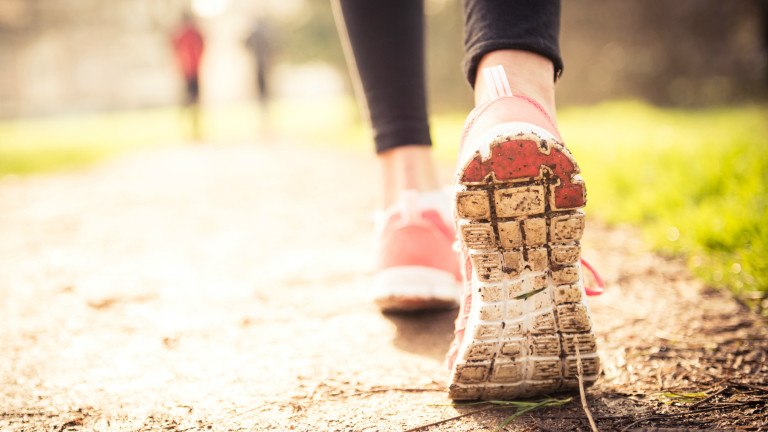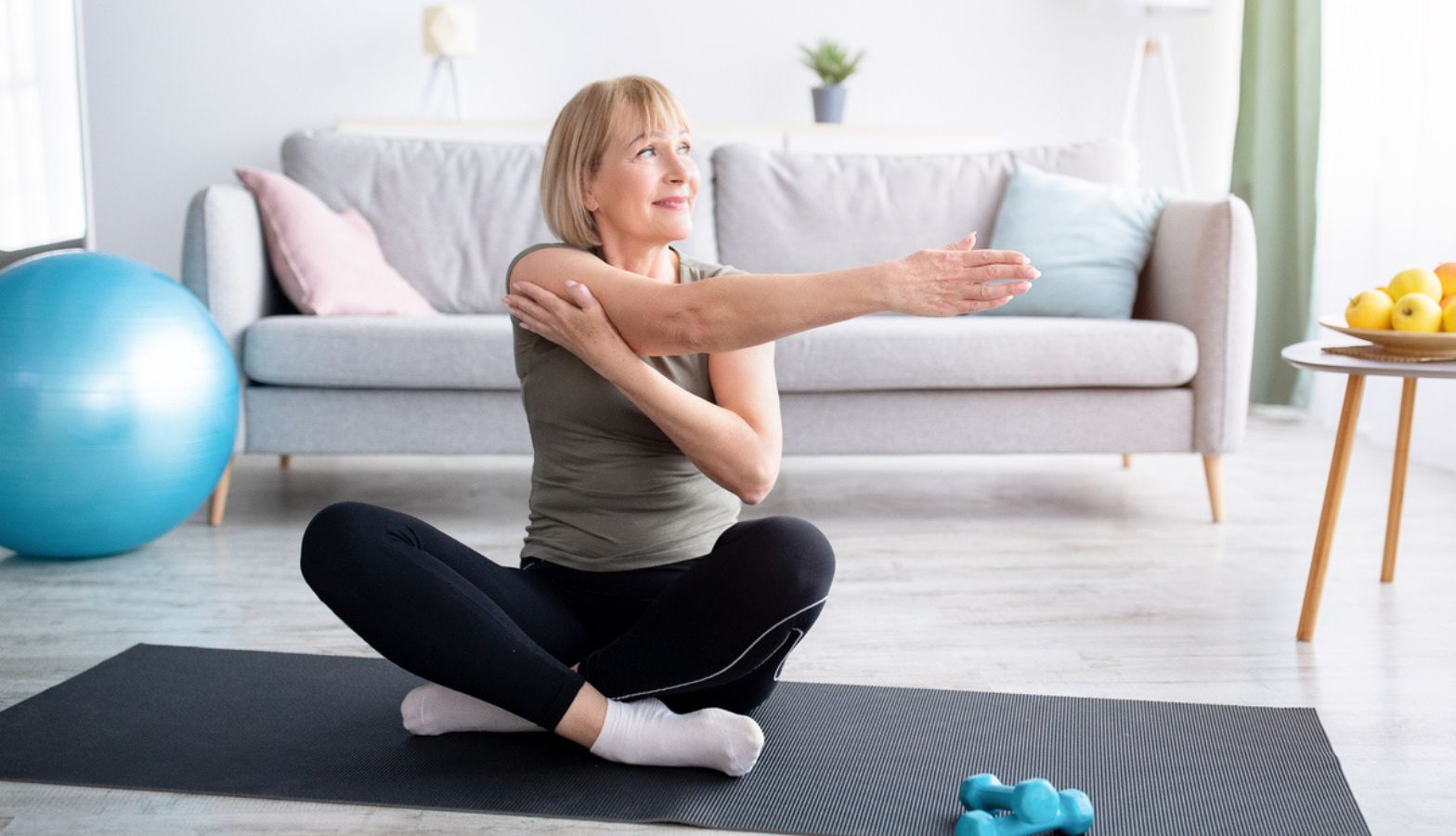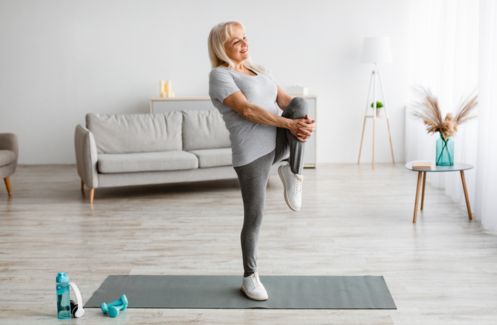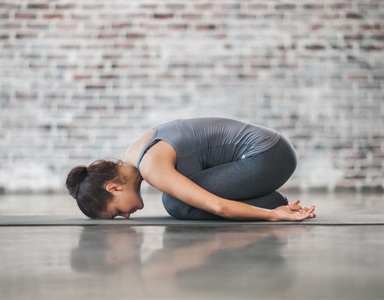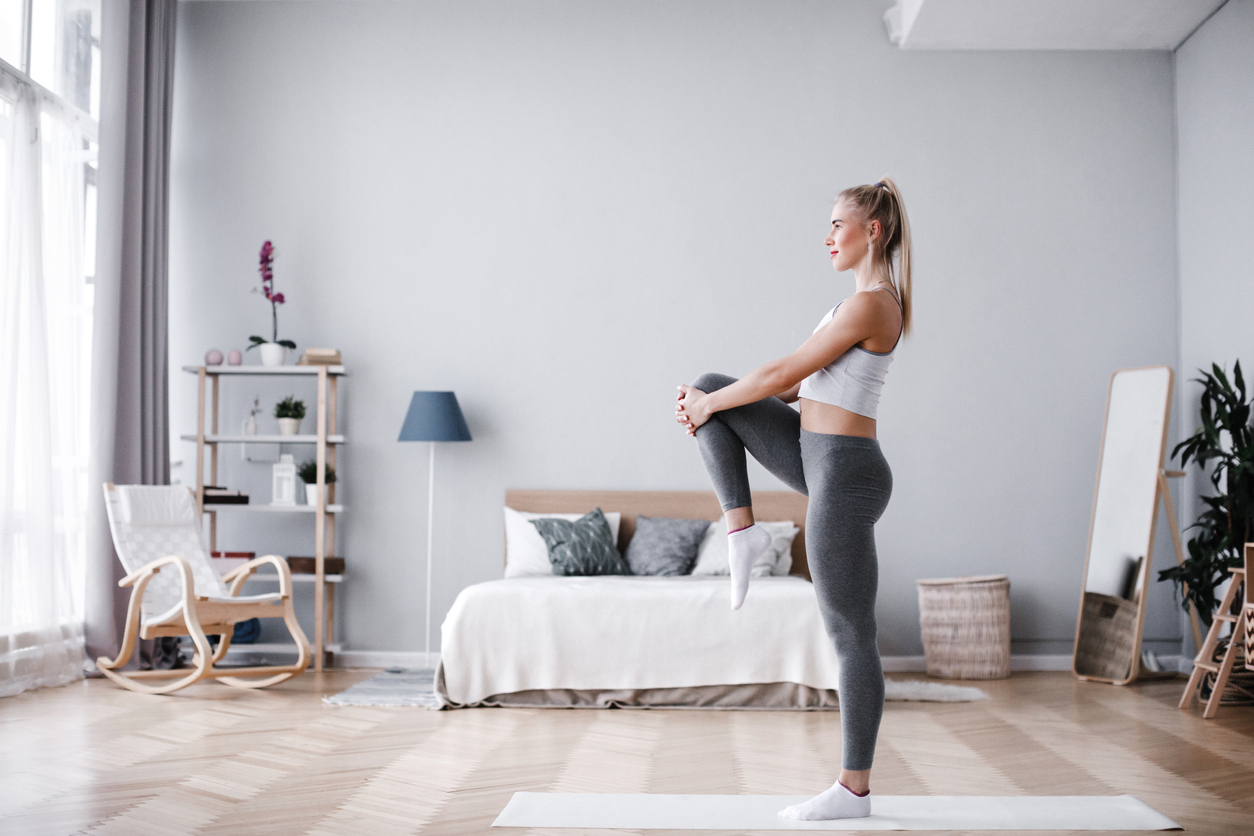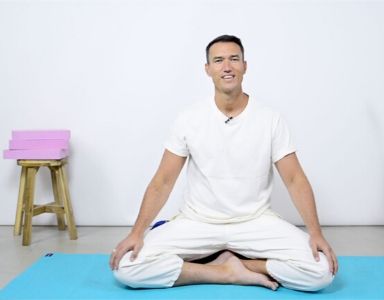Before every exercise, most of us forget the most important thing to do which is warming up. Warm up exercises are an excellent way to prepare the body for exercising. Warm ups increase the blood flow to the muscles allowing them to loosen up, which can raise the flow of oxygen to the muscle cells. Healthista’s Fast Fitness blogger Kelly Du Buisson explains
Recently I was given the amazing opportunity of warming up the runners at the annual Berkhamsted half marathon. I had to get up the stage in front of 2000+ runners and create a routine that would not only warm them up efficiently but also inject a burst of fun into their preparation. Needless to say it went really well (despite breaking my microphone half way through!)
After the race I received lots of comments regarding how great the runners felt after doing a thorough warm-up, with lots explaining that normally before a race like that they wouldn’t do anything to prepare.
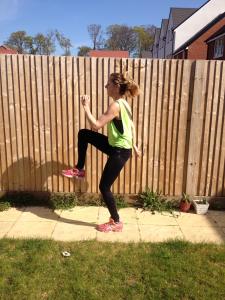
“high knees” warm-up
This got me to thinking about the benefits of warming up; not just before running but before undertaking any exercise.
Warming up is vital to ready the body for the exercises to come.
Exercise places a huge strain on your muscles and internal systems and if the body is not prepared for the extra workload, injury and illness can occur.
Let’s take a race such as the Berkhamsted half marathon as an example; the weather was sunny but cold and in these conditions your blood vessels shrink to allow the body to keep warm. This slows the heart rate down, therefore oxygen is not as readily available to the muscles and once pushed, they will fatigue quicker.
To begin with you need to raise the heart rate so we did some gentle marching on the spot, side steps and star jumps. Raising the heart rate allows the capillaries to dilate increasing the flow of blood and oxygen around the body. The muscles will begin to warm up and expand and enzyme activity increases (enzymes are formed from proteins and proteins helps to repair muscle fibres) so they’re more flexible decreasing the risk of pulled or torn muscle.
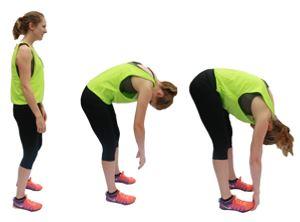
warm-up
Then move onto some gentle mobility stretches to open out the joints. We worked with hip circles, lunges and arm circles. You may not realise it but you use those arms a lot when running and a lot of friction is created through the shoulders! Ever had a shoulder stitch? Synovial fluid is released to lubricate and protect and the nervous systems will react to let the brain know the work load is increasing.
So to finish, the movements should be specific to the activity about to ensue. So for the race we went for agility, side steps (dodging pot holes), high knees (tall grass) and fast feet (sprints to the finish!).
The whole routine took us no longer than 5-10 minutes and it shouldn’t feel like an actual work out although heart rates will have risen considerably and joints were loose, allowing for greater overall speed from the word go.
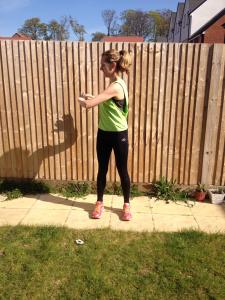
twists
I always feel warming up has a psychological benefit as you can hit that start line or even that gym routine ready to go rather than tight, stiff and dreading the effort it will take to get moving.
Add in a warm up for every workout you do and see your performance and results improve dramatically
To summarise:
* Make the warm up specific to the workout
* Warm up the whole body, despite it only being a race or even just arm day.
* Start by increasing the heart rate
* Dynamically stretch
* Finish with specific moves
* It is not a workout in its self so don’t overdo the pace
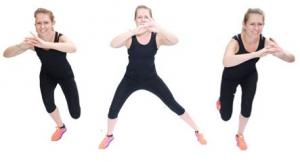
that Kelly Du Buisson uses
More blogs and video workouts form Kelly’s Fast Fitness blog

of The 7 Minute Workout
Kelly Du Buisson is a leading London trainer specialising in short, high intensity workouts that get her clients super-fit, super-fast. Kelly is also the Fast Fitness blogger for Healthista.com and the creator of the Healthista 30 Day Squat Challenge
Like this article? Sign up to our newsletter to get more articles like this delivered straight to your inbox.



